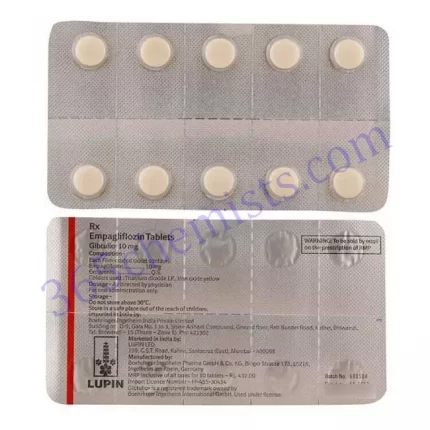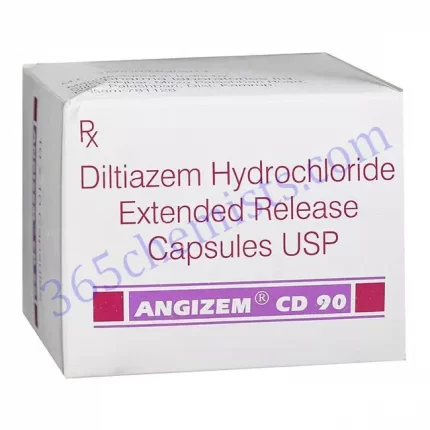Fruselac DS Tablet (Furosemide 40mg/Spironolactone 50mg)
The Fruselac DS Tablet is a combination medication that is used in the management of certain conditions related to fluid retention and edoema. Each tablet contains furosemide (40 mg) and spirolactone (50 mg), and each tablet is taken orally. While furosemide is a diuretic that helps increase urine production, spironolactone is a potassium-sparing diuretic that helps maintain the body’s electrolyte balance. Furosemide is a medication that helps increase urine production. This article provides a comprehensive overview of Fruselac DS Tablet, covering topics such as its applications, modes of action, dosage, potential adverse effects, and safety considerations.
Uses
Edoema, which can be caused by conditions such as congestive heart failure, liver cirrhosis, and kidney disease, is the primary indication for the use of the Fruselac DS Tablet as a treatment option. Managing hypertension, also known as high blood pressure, and lowering the risk of fluid retention in conditions such as nephrotic syndrome are both additional uses for this medication. In the Fruselac DS Tablet, the combination of furosemide and spironolactone provides a dual action, promoting diuresis while also helping to maintain the balance of electrolytes, including potassium, in the body. This dual action is what makes the tablet so effective.
Mechanism of Action
The active ingredient in Fruselac DS Tablet is furosemide, which is a loop diuretic. It works by preventing the reabsorption of sodium and chloride in the kidneys, which in turn encourages the excretion of excess fluid and lessens the symptoms of edoema. Spironolactone, on the other hand, is a potassium-sparing diuretic that inhibits the action of aldosterone, which is the hormone that is accountable for the retention of sodium and water. Spironolactone works to maintain a healthy balance of electrolytes, including potassium, in the body by inhibiting the action of the hormone aldosterone. The synergistic effect that results from the combination of these two medications in the Fruselac DS Tablet results in increased diuresis while simultaneously reducing the likelihood of potassium depletion.
Dosage and Administration
Fruselac DS Tablet dosing should be determined by a healthcare professional based on various factors, including the underlying condition, the severity of the edoema, and the individual response to the medication. These factors can vary greatly from patient to patient. Oral administration once daily, either with or without food, is the typical method of administration. It is essential to take the medication exactly as it was prescribed and to strictly adhere to the treatment plan that was suggested. It is recommended that the medication be taken in the morning to prevent the need to urinate frequently throughout the night. During treatment with Fruselac DS Tablet, it is imperative to maintain a regular monitoring schedule for blood pressure, levels of electrolytes, and renal function.
Side Effects
Although the Fruselac DS Tablet is generally well tolerated, it is possible for some people to experience certain side effects when taking it. Increased urination, electrolyte imbalances (such as low potassium or high potassium levels), dizziness, headache, muscle cramps, and gastrointestinal disturbances are examples of common side effects that may occur. These adverse effects are typically mild and fleeting, meaning that they go away on their own over the course of time and do not call for any special treatment. However, it is imperative that a medical professional be contacted in the event that any of these potential adverse effects continue or become more severe. Fruselac DS Tablet may, in extremely rare instances, cause more serious adverse effects, such as severe electrolyte imbalances or allergic reactions. These adverse effects may be fatal. During treatment, it is recommended to carefully monitor the levels of electrolytes and to follow up with a healthcare professional on a consistent basis.
Precautions
It is extremely important, prior to beginning treatment with Fruselac DS Tablet, to inform the healthcare professional who is prescribing the medication about any pre-existing medical conditions, allergies, or medications that are currently being taken. This includes providing any relevant medical history, such as a family history of diabetes, kidney disease, liver disease, or electrolyte imbalances. It is essential to make a full disclosure of any and all medications that are being taken because the Fruselac DS Tablet may interact with other medications, such as other diuretics or medications that affect the levels of electrolytes. During treatment with Fruselac DS Tablet, it is recommended that the patient have their blood pressure, electrolyte levels, kidney function, and liver function monitored on a regular basis.
Conclusion
Fruselac DS Tablet is a combination medication that contains furosemide 40 mg and spirolactone 50 mg. This medication is used in the treatment of edoema and fluid retention that can be caused by a number of different conditions. It accomplishes this by increasing diuresis and assisting in the maintenance of electrolyte balance, both of which contribute to a reduction in edoema and an improvement in the fluid balance overall. Utilisation of Fruselac DS Tablet in a manner that is both safe and effective requires strict adherence to the recommended dosage, prompt communication of any adverse effects to a qualified medical professional, and careful observance of all safety precautions. The best possible results from treatment can be ensured by maintaining regular monitoring and maintaining open communication with medical professionals.












